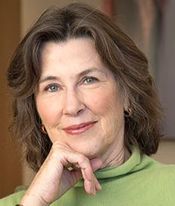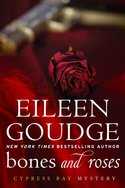
 Drama isn’t just the stuff of my fiction, it’s the story of my life. Case in point: two days ago, I’d just posted on Instagram when I realized to my horror I’d accidentally (don’t ask!) tacked a list of my passwords onto the post. I instantly deleted it, of course. I wasn’t aware it had gone out on Twitter and Facebook until I got a phone call from my sister-in-law, Doretta, in California. It’s not enough I have to worry about hackers in the Ukraine—oh no, way too tame for yours truly— I had to post my passwords on the Internet. Hours later, when I finally staggered off to bed after changing all my passwords, it was only to toss and turn with nightmares of Ukrainian hackers.
Drama isn’t just the stuff of my fiction, it’s the story of my life. Case in point: two days ago, I’d just posted on Instagram when I realized to my horror I’d accidentally (don’t ask!) tacked a list of my passwords onto the post. I instantly deleted it, of course. I wasn’t aware it had gone out on Twitter and Facebook until I got a phone call from my sister-in-law, Doretta, in California. It’s not enough I have to worry about hackers in the Ukraine—oh no, way too tame for yours truly— I had to post my passwords on the Internet. Hours later, when I finally staggered off to bed after changing all my passwords, it was only to toss and turn with nightmares of Ukrainian hackers.
My decision to go indie after decades of being traditionally published began in similar grand fashion. It dates back to an incident that occurred before there even was an Internet to speak of. When my second novel, SUCH DEVOTED SISTERS, came out in the 1980’s, it happened to coincide with the fatwa on Salman Rushdie, with whom I shared the same publisher at the time. Everyone involved with the Rushdie novel had received death threats and were understandably distracted. (In retrospect, I see the bomb-sniffing dogs as a metaphor for what happened to me). I don’t know if that was the why SUCH DEVOTED SISTERS didn’t perform as well as expected, or if it was because it came out at Christmastime and got buried in the slew of gift books, but I suspect it was a contributing factor. Though hardcover sales were roughly equal to that of my first novel, GARDEN OF LIES, which was New York Times bestseller, the print run was double, so we were looking at a disappointing sell-through. I enjoyed some success after that, but it wasn’t the rocket blast into the stratosphere that had once seemed preordained. Then, in the 1990’s, a perfect storm—corporate merger; divorce from my agent, both personally and professionally (yes, I was actually married to him); falling out with my editor; and loss of a key executive to another house—had me floundering.
Ukrainian hackers would’ve been the least of my worries.
It took me a few more years, but I finally woke up and smelled the coffee, realizing if I didn’t pull myself out of the downward spiral I was in, I was going to crash and burn. An author pal of mine who’d found success as an indie author urged me to follow suit. “What do you have to lose?” she reasoned.
She was right. I had nowhere to go but up.
My first indie novel, BONES AND ROSES is a mystery, the first book in my Cypress Bay mystery series. After writing 15 women’s fiction novels I felt it was time for a change. Conceived during a walk on the beach in my hometown of Santa Cruz, California, it grew in me like a pearl in an oyster. I knew this was something I had to write, and the first book poured out of me as soon as I put pen to paper, figuratively speaking (I write on my computer these days).
Writing the book, as it turned out, was the easy part. The hard part was becoming my own publisher. If my decades of experience have taught me one thing, it’s that you don’t venture into publishing lightly. Even if you’re putting out only your own title(s), you still need an editor, copyeditor, book cover designer, printer (or digitizer, in this case), and someone with marketing expertise if you’re like me when I first started out. It took months to assemble a team, get a kickass book cover, educate myself about SEO, and become active with various social media platforms. I still feel like I’ve only just begun in some ways, but I’m miles from where I started. Now, with the first book out and another one on the way, I can feel good about what I set out to do.
When I joined the ranks of indie authors, I was plunged into the whole debate over indie versus traditional publishing, which has generated a great deal of online chatter. From what I’ve been reading it would seem a number of indie authors feel spurned or hard-done to by traditional publishing. Publishers are accused of being “callous” toward midlist authors and “clueless” in general. Those in the opposing camp tout the virtues of being published by one of the Big Five and point out the high failure rate of indie publishing. The majority of people who have an opinion on the subject are firmly on one side or the other. Me, I’m on neither side. There is much to be said for the creative freedom, control over pricing, and higher percentages of going indie. Yet I don’t believe traditional publishers as a whole are either callous or clueless. The realities of doing business in today’s world might seem harsh, but the publishing execs with whom I’ve done business aren’t bad people. Quite the contrary. I’ve had the privilege of working with some smart, savvy publishers, editors and agents, and for a good long while I enjoyed the fruits of that collaboration. Also, keep in mind no one goes into publishing to get rich. People who go into publishing are motivated by a love of literature and the satisfaction of working with authors, not money.
If anything is to blame it’s the perfect storm of the recession coinciding with the digital revolution. And yes, there are companies that are slow to adapt to change. Take Blockbuster, for instance. They apparently didn’t see the handwriting on the wall when Netflix crashed the party, and they paid the price. In contrast there are forward-thinking companies that seize the ball and run with it.
Open Road Media is one such company. The brainchild of CEO Jane Friedman, former president of HarperCollins, it’s all about the future—as in digital publishing—not the past. I’m lucky to have their crack marketing team, headed by Rachel Chou, promoting a number of my backlist titles. Whereas another publishing company might have viewed my decision to go indie with my latest project as a defection, they’ve been wonderful in working with me to cross-merchandise.
I’m left wondering why we can’t all play nice. When you get right down to it, we’re all on the same side because we all want the same thing: to sell books. In a perfect world we’d all work together to make that happen. I don’t know if that day will ever come, but in the meantime I’ll keep doing what I do, which is to write and continue putting it out there, in whatever form that takes.
If you decide to self-publish, here’s what I’ve learned from being on both sides of the process:
1. Prioritize the cover. Readers do judge a book by its cover. They’re put off by covers that look amateurish and are likely to overlook ones that are too generic. Pay the most you can afford for a top-notch book designer to design an eye-catching and professional-looking cover, one that will aid rather than hinder your marketing efforts.
2. Quality counts. Most readers couldn’t care less whether a book is self-published or traditionally published. They do care, however, if they feel wasted their time and/or money on something of inferior quality. This is why editing is so important. Join a writers’ group and/or get a critique partner if you’re just starting out, and after your manuscript has been revised and polished, hire an editor and copyeditor to go over it. As a final step, it’s a good idea to pay a professional to proofread it, as did I with my indie title.
Years ago, I had a novel of mine that was traditionally published come out in hardcover riddled with so many errors, I concluded the copyeditor or printer or both were high on drugs when they should’ve been doing their job. I received countless emails from readers who were either outraged on my behalf or who felt the sheer number of errors had spoiled their reading pleasure. I’ve never been so embarrassed to have my name on something I wrote!
3. Marketing matters. Going indie doesn’t mean going alone. I have an author friend who does it all, comfortably wearing two hats, but she has a background in marketing and advertising. For those of us who’d be content to write in an ivory tower given the choice, it’s a good idea to find someone with experience in that area to help publicize your book when the time comes. Unless you’re lucky enough to have a knowledgeable friend or family member who’s willing to pitch in, you’ll need to hire someone. If it’s not in your budget take the time to educate yourself, which you should do anyway. Lots of community colleges offer courses in online marketing, and there are many excellent resources online, such as Mediabistro, The Book Designer, Pro Blogger, among others.
Most of all, be prepared to work hard. I’ve never worked so hard in my life. Will it all be worth it in the end? Only time will tell, but I can say it’s been one of the most gratifying experiences I’ve had as a writer.
***
New York Times bestselling novelist Eileen Goudge wrote her first mystery, Secret of the Mossy Cave, at the age of eleven, and went on to pen the perennially popular GARDEN OF LIES, which was published in 22 languages around the world, and numerous other women’s fiction tiles. BONES AND ROSES is the first book in her Cypress Bay Mysteries series. She lives in New York City with her husband, television film critic and entertainment reporter Sandy Kenyon. Keep connected with Eileen at her website.


No Comments
Comments are closed.